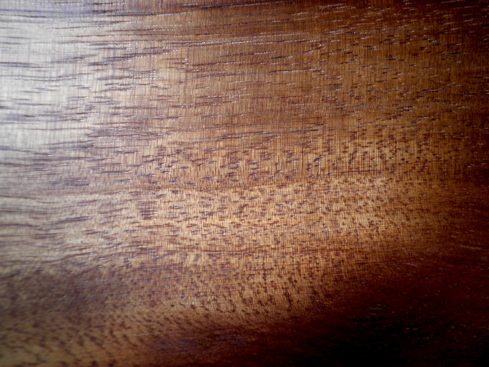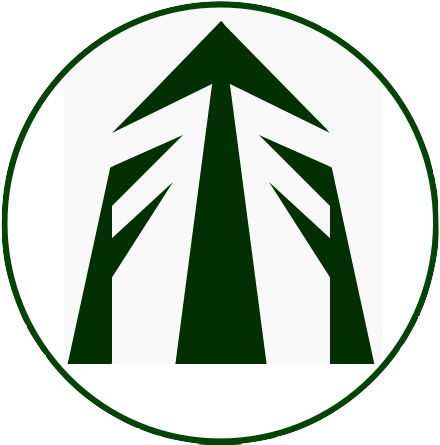Timber Preservation
| Hazard classes | |
|---|---|
| H1.1 | Timber used in situations protected from the weather, dry in service and where resistance to borer only is required. |
| H1.2 | Timber used in situations protected from the weather but where there is a risk of moisture exposure conducive to decay. |
| H3.1 | Timber used outdoors above ground, exposed to the weather – generally in< non-structural applications; i.e. fascia boards, weatherboards. |
| H3.2 | Timber used outdoors above ground, exposed to weather or protected from the weather but with a risk of water entrapment; i.e. structural applications, decking, fencing and pergolas. |
Introduction
Although many specialty timbers have natural durability, durability can be variable and for building code compliance some building elements exposed to the weather might require treatment to a hazard class as specified in NZS 3602.
Sapwood of all species is non-durable. Where sapwood is present in timber for structural elements within the building envelope, treatment is necessary to comply with the building code, i.e. NZS 3602 for an Acceptable Solution.
However, there are concerns about the potential effect on human health and the environment from toxic chemicals used in conventional preservative treatments of timber. Fortunately there are environmentally benign forms of timber preservation available such as Boron treatment, acetate and thermal modification.
Boron treatment of timber
Boron-based preservative compounds (borates) offer significant environmental and health advantages over other preservatives, with low mammalian toxicity and low environmental impact. Conventional wood preservatives which consist of the active ingredient and a solvent (e.g. LOSP), give more cause for concern because of the organic solvents which carry the chemicals.
Borates are inexpensive highly effective timber preservatives, effective against both fungal and insect attack. They also have flame retardant properties.
Borates are salts of boric acid. Borax is the sodium salt of boric acid and is mined as nearly pure sodium borate. Borax is easily converted to boric acid and other borates. Borax itself has many commercial uses including water softening, and has flame retardant properties. Disodium octaborate tetrahydrate (DOT) is often used as a wood preservative.
Borates are water soluble salts and traditionally water has been used for diffusion of boron into timber. However, this is not always appropriate for seasoned timber where it is not desirable to increase moisture content, such as where dimensional stability is critical, and where grain-raising is to be avoided in joinery products.
All the reviewed scientific data indicates that borates have been proven effective against all known wood destroying organisms were they have been applied, such as in North America, Europe, Japan, Australia and New Zealand.
Borates are odorless and colourless. Proper application lasts for the lifetime of the wood. Repeat treatment is not necessary. However, because boron-based treatment is water-soluble it can be leached out of wood if exposed to excessive moisture. Borates are not used for preservative treatment of wood exposed to repeated wetting, such as in outdoor settings and other weather-exposed situations. Borates do not leach out of structural wood under typical conditions and remain available to repel wood-destroying organisms for the life of the building. Leaching in not of concern for borate-treated structural wood as long as the wood is sheltered from rain or sealed against moisture.
H 1.2 treatment under NZS 3640 requires complete sapwood penetration of boron and an average cross section retention of 0.4% BAE (Boric Active Element) of the oven-dried wood. NZS 3640 Chemical Preservation of Round and Sawn Timber allows H 1.2 boron treatment of all species for which H 1.2 is specified in NZS 3602. This includes cypress species (macrocarpa, lusitanica, Lawsons cypress) for most structural applications.
Traditionally boron is applied to green sawn timber under dip-diffusion, pressure-diffusion or pressure treatment processes. Allowing the treatment to diffuse for sufficient time until full penetration of sapwood has occurred (usually between two and eight weeks) before seasoning the timber will meet H 1.2 requirements.
Timber is also required under NZS 3640 to be verified as meeting the minimum preservative levels by an independent quality assurance programme.
Glycol borates
Glycols are organic compounds in the alcohol family and are used as penetrants for boron into timber. Ethylene glycol is moderately toxic but propylene glycol is a non-toxic alternative also used in skin creams, food additives and toothpaste. Both forms are effective at carrying borate into wood fibres.
Glycol borates are formulations of inorganic borate salts in a carrier of glycol. The glycol base acts as a carrier ensuring deep penetration of boron but without wetting the timber. Glycol borates are highly effective timber preservatives. Because penetration (diffusion) of boron continues over time these treatments are even suitable for application to completed joinery items.
Glycols break down quickly in the environment and present no environmental hazards.
See Home-Brew Solution of Borates
Glycol borates applied to timber may initially penetrate only 3mm into the timber creating a protective envelope around the outside of a piece of timber. When the timber is moistened or wetted, the preservative is diffused into the timber. This is different from treatment systems that conform to NZS 3640, where complete sapwood penetration of boron takes place (H1.2).
Applied industrially with penetrants, glycol borates can meet the requirements of H1.2. Such products currently marketed include Osmose's Framepro, Arch Wood Protection NZ Ltd's FRAMEBor, Copcote's Tru-core and TimTech's BG-Dry.
The performance of any treatment hinges on the level of retention of the active ingredient which must be higher than the lowest expected threshold values. To be effective in controlling decay, timber treatment levels would need to remain above the minimum levels suggested by NZ research (0.15% BAE).
Acetylation
Acetylation of wood has recently been commercialised in Europe with the worlds first cost-effective large-scale production facility producing acetylated wood.
By reacting the wood with acetic anhydride, which comes from acetic acid (i.e. vinegar) the wood (known as "Accoya") becomes more dimensionally stable and also very durable. However radiata pine treated with this process is currently expensive in New Zealand.
Thermal modification for durability

Wood can be heat treated at between 190° and 230°C to become more dimensionally stable, stiffer and durable. However the wood also becomes weaker (bending strength). The wood also becomes a rich dark brown colour and thermal modification can also be used for producing wood with a darker appearance.
Creosote
Creosote is produced by the high-temperature distillation of bituminous coal. The distillate consists of solid aromatic hydrocarbons, and tar acids and bases. Creosote is toxic to fungi and insects, is relatively insoluble in water, and is generally low cost. It is a traditional penetrating surface treatment which imparts durability to wood. The pungent odour, oily finish and its propensity to leak and stain surrounding material makes it less desirable in some situations. Creosote is used where timbers are in contact with the ground such as railway sleepers, fence palings and battens. It is also effective in marine structures.
Disclaimer: While every effort is made to ensure the accuracy of the information provided on this site, Farm Forestry Timbers Society do not accept liability for any consequences arising from reliance on the information published. If readers have any doubts about acting on any articles they should seek confirming, professional advice.
 Farm Forestry New Zealand
Farm Forestry New Zealand Farm Forestry Timbers - Headlines
Farm Forestry Timbers - Headlines